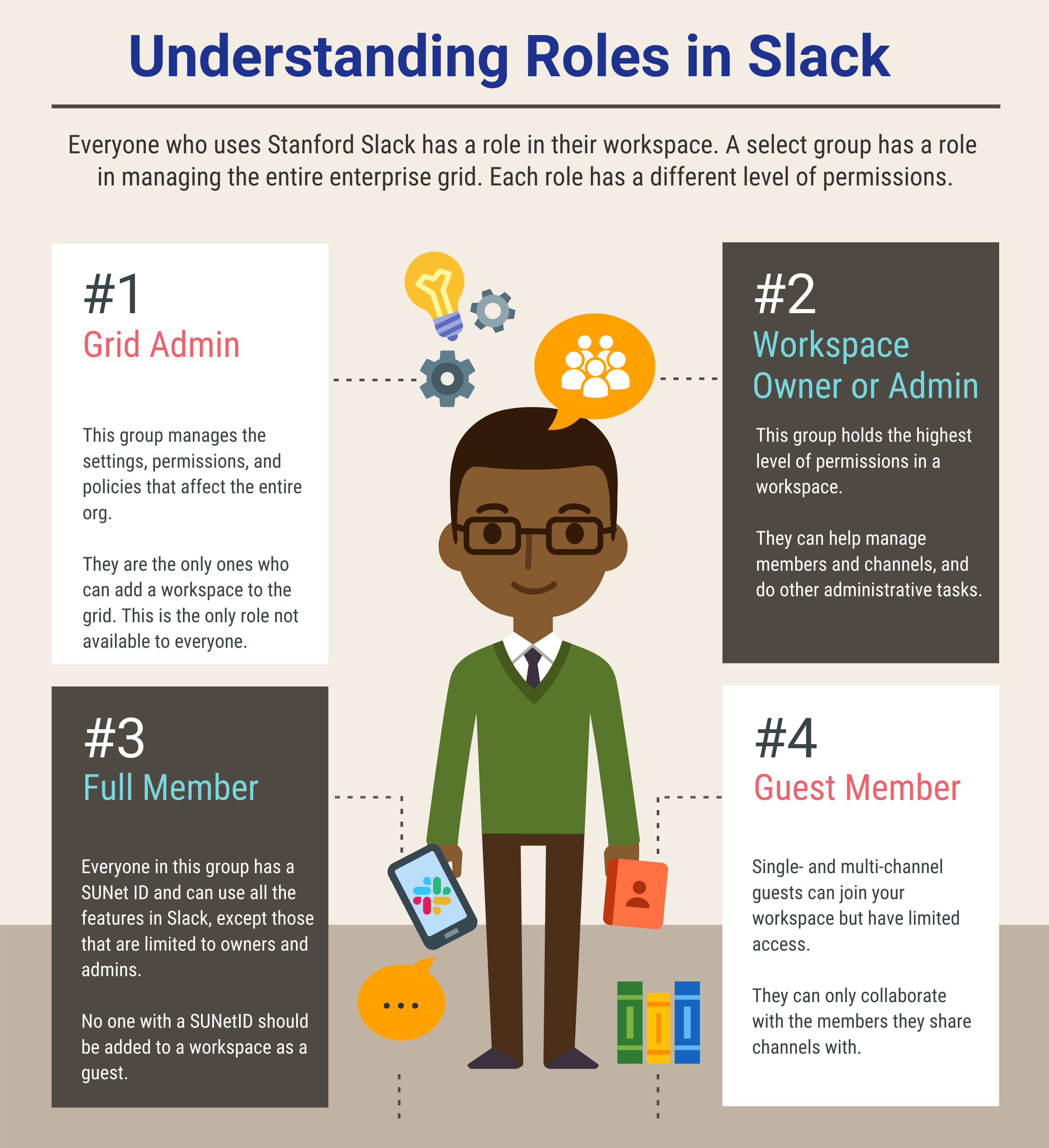Well-constructed names help keep everything organized and easier to find.
New requirements for Cyber Security training. New Training: New courses 205 and 205PRA replace course 138 for those requiring CPR/First Aid Training; AD214: Cryomodule, Waveguide, and SC Beamline Protection. Stanford has an enterprise contract to use Slack; you must authenticate to view a list of workspaces. Ask colleagues about what channels to join, too. Slack workspace directory.
It's easy to create new channels in Slack for different groups, projects, events, or whatever else is relevant to your team. As you and others in your workspace build your channel structure, don't underestimate the importance of channel names. Establishing a channel naming convention early on keeps content organized and easier to find. Try using these tips below.
Create a name for each channel that helps everyone in the workspace understand who should join the conversation and what the purpose of the channel is.
Create standardized abbreviations for your workspace.
Channel names must be 21 or fewer characters. This can make getting the 'who' and 'what' into the name a challenge. What's the solution? Start by creating three to four letter abbreviations for each department, team, or unit on the workspace. For example, the marketing team might be mktg. The finance team might be fin. Be sure to share the list of abbreviations with everyone on the workspace. Use a file that can be easily edited and updated if new abbreviations are added.
Slac National Accelerator Laboratory Mfd
Channels names are sorted alphabetically in the sidebar by default. Always place an abbreviations at the start of each channel name - like a prefix. This keeps related channels located next to each other in the sidebar. With this strategy, your marketing channels might look like this:
#mktg-presentations
#mktg-print
#mktg-web
Remember to complete the Purpose field. This is a great way to add an extra 250 characters of context about the channel. Channel purposes are displayed when your colleagues browse the channels in your workspace - giving them some additional helpful information.
About SLAC
As one of 17 Department of Energy national labs, SLAC pushes the frontiers of human knowledge and drives discoveries that benefit humankind. We invent the tools that make those discoveries possible and share them with scientists all over the world.
SLAC Director Chi-Chang Kao, a noted X-ray scientist, became the laboratory’s fifth director in November 2012. Kao came to SLAC in 2010 to serve as associate laboratory director for the Stanford Synchrotron Radiation Lightsource.
The lab is organized into five scientific directorates, each of which plays an important role in advancing our mission.
In 1962, construction began on what was the longest and straightest structure in the world: the two-mile linear particle accelerator. Learn the story of SLAC, from its founding to today.
The name SLAC National Accelerator Laboratory pays homage to the legacy of the lab and its connection to Stanford University and the Department of Energy (DOE).
SLAC National Accelerator Laboratory ('SLAC') requires our partners and colleagues to use the SLAC logos, names, or trademarks (together, 'SLAC logos') and follow guidelines available on this page when publicizing SLAC's work and activities. These SLAC logos are the primary graphic identifiers of the laboratory and are meant for official use only.

Download a variety of fact sheets about SLAC science and facilities, from “SLAC by the Numbers” to descriptions of our research and programs.

Want to learn more about SLAC? Find out how to call, email or visit us.
Related links
About
Slac It
- SLAC Overview
- Director's Office
- Past SLAC Directors and Deputy Directors
- People
